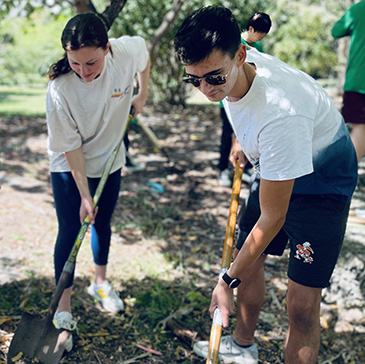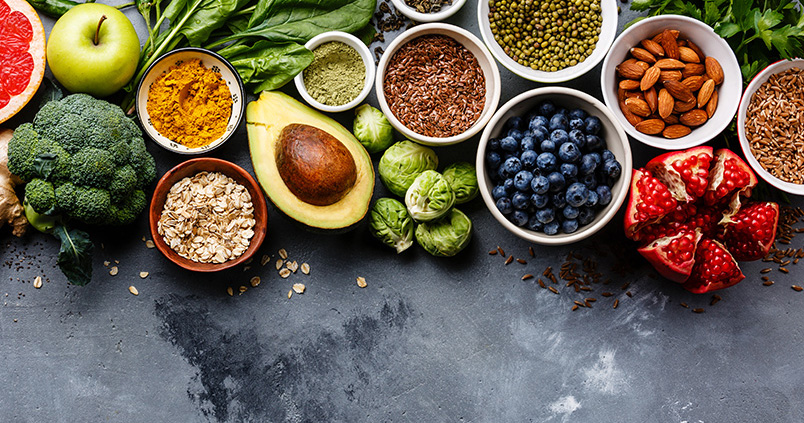There’s probably nothing more universal than eating, and College of Arts & Sciences courses cover every aspect of that experience—production, preparation, consumption, and the socioeconomic dynamics that come into play every step of the way.
Richard Weisskoff, economist and chair of the Department of International Studies, describes his two-part Global Food and Food Policy course as a “hands-on approach,” and that’s more than just a metaphor.

some much-needed pruning in the garden
on the Coral Gables campus.
Through the course, students examine world hunger and gain an understanding of the impact of economics on the issue. In the process, they literally get their hands dirty on a .12-acre “global farm,” where they grow a wide range of tropical crops.
“I do activist economics, teaching by doing things,” says Weisskoff. “It’s sweat. It’s hard work. It’s digging and hoeing and cutting and weeding.”
Students also get to enjoy the fruits of their labors—“harvesting, eating, and schmoozing,” as Weisskoff says.
“We improve the land while we learn how to eat better. Our theme is ‘Grow Great Gardens Everywhere.’” As the food affordability crisis persists on both the global and national levels, Weisskoff adds, “It behooves everyone to grow as much as they can in their backyard—and even in their front yard.”
When it’s time to cook our food, we rarely understand what actually occurs during the process. Leslie Knecht’s The Chemistry of Food and Taste gets into the science of food preparation. “We’re all chemists when we cook,” says Knecht, a senior lecturer in the Department of Chemistry, pointing out that the complex interactions of chemical compounds with heat, salts, oils, and each other determine what a given dish tastes like.
She also notes that those interactions can inspire surprising combinations in the class test kitchen. “There are some weird combinations that go together surprisingly well,” Knecht says. For example, students did a combination of beer-battered fried fish and blueberry compote. It sounds weird, but it tasted delicious.”
Students can explore the many social meanings of food in Traci Ardren’s Anthropology of Food course. The course considers eating throughout history while also addressing cultural differences, many of which persist amid the globalization of food production. For a section about alternative protein sources, Ardren, a professor in the Anthropology Department, typically brings in samples of freeze-dried grasshoppers.
“Only a few adventurous students will try them,” she says. “But that reluctance is definitely a learned behavior. The only reason we don’t eat insects in the U.S. is our cultural ideas about them. Lots of people around the world are happy to eat them as a delicacy.”
Finally, for a nightcap, there’s Justin Stoler’s interdisciplinary Wine, Environment, and Society course, one of several food-related courses he teaches. The first several weeks focus on production: agriculture, sustainability, and the effects of climate change. Later sections highlight consumption issues such as marketing, labeling, and economics.
“For example, we discuss what a $20 bottle of wine costs to make, and why some bottles are $5 while others are $100,” says Stoler, an associate professor in the Department of Geography and Sustainable Development. “It is a distinctly consumer-centric, anti-wine-snob approach.
“The goal is to prepare students to make confident choices when confronted with a wine list, strengthen relationships, and make great friends and memories as they travel through the world of wine.”

